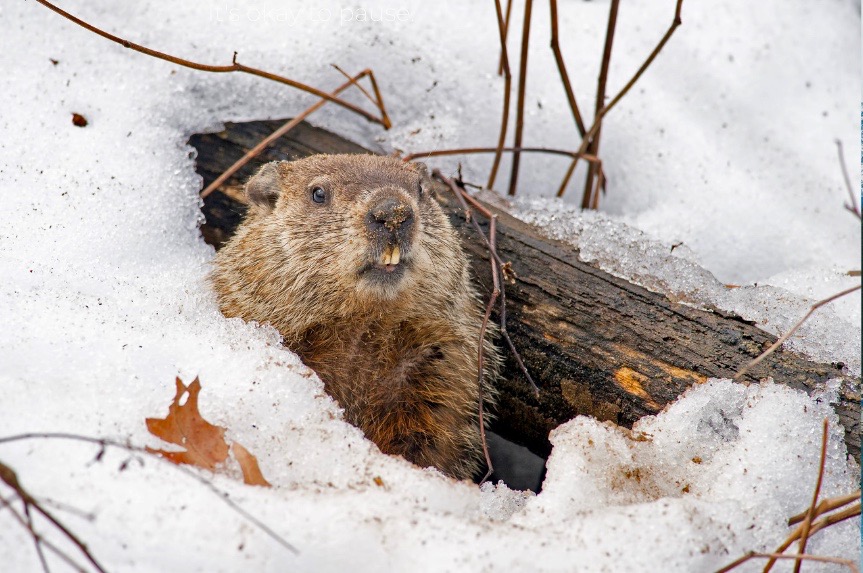
by Kate Evert | Feb 23, 2021 | Diversity, Equity, Inclusion, Innovation, Inspiration, Strategy
It’s complicated.
A phrase that we associate with romantic relationships as we close out this month of Valentine’s Day.
But McDonald’s and the African-American community? Oh yeah.
When Marcia Chatelain published her book, Franchise at the end of 2019, she couldn’t have imagined what 2020 would bring. But for those of us struggling to understand all the complexities of systemic racism, she employed a clever device to convey its many mechanisms.
There are few among us who haven’t tasted, or craved, something from McDonald’s. It’s a fairly universal American icon. Yet in tracing the inception, growth, urban retrenchment, and eventual Black franchise-ownership, she is able to walk us through a journey that few of us know enough about.
There are many aha moments. These insights detail examples from why returning Black GIs weren’t allowed to take full advantage of all that the GI Bill had to offer, to why Black franchise-owners continually had higher per store sales, yet saw those margins erode because of the unfavorable terms McDonald’s “offered” them.
This book transforms systemic racism from a vague but overwhelming concept to a process outlined with concrete steps for permanence. It becomes very easy for those of us who understand what the post-WWII boom did for the majority of Americans, to now understand how so much of that economic prosperity was not afforded to a whole group of Americans.
“Two all-beef patties, special sauce, lettuce, cheese, pickles, onions on a sesame seed bun!”
So that special sauce of success?
Franchise helps you understand a series of decisions that kept the special sauce from all of America.

by Kate Evert | Feb 16, 2021 | Community, Diversity, Equity, Inclusion, Inspiration, Leadership
What do you think when you see this image?
Some may think this is a very overused image.
Perhaps it’s a cliché. It’s over-done. It over-simplifies something that isn’t simple at all.
But about two years ago, those of us in Chicago learned, or re-learned, how a group of young white men from Mississippi sent a decoy group to board a plane, then drove out of their way, across their state border, and came to the frigid north in March, just so they could play a ball game.
And that meant a white player shaking hands with a Black player at center court. For the whole country to see. Including the Governor of Mississippi who had forbid them to leave their state precisely because he didn’t want them to compete with Black athletes.
When Loyola beat Mississippi State, the Chicago school went on to win the NCAA championship; so far, the only Chicago college to capture such an honor. A stirring reminder of that achievement reverberates throughout Loyola’s Gentile Arena whenever the Ramblers reach 63 points: the student section chants “six – ty three, six – ty three.”
Many have argued how significant or insignificant that game was. Against a backdrop of Civil Rights issues that were yet to be addressed, and the violence and economic hardship that continued, how much did that game change?
But in 2011, when Jerry Harkness attended Joe Dan Gold’s funeral in Kentucky, there, next to the casket was a picture. It was from 1963, of the two of them shaking hands at the beginning of the “Game of Change” – a game that the Governor had tried to stop by issuing an injunction, and that had been overridden by a handshake.

by Kate Evert | Feb 9, 2021 | Corporate Culture, Diversity, Equity, Inclusion, Human Capital, Leadership Agility, Productivity, Strategy, Work Place
By Lisa Aggarwal
Commonwealth HR Consulting is a firm composed of women who love math. So perhaps it’s not surprising that the movie Hidden Figures resonates with several of us.
We are told from a young age that we can do hard things. “Things” have certainly been hard lately. Who better to learn from than women who looked hard in the face and told it to try harder.
One of the most amazing things about this movie was that no embellishments were needed to tell the stories of these female African-American “human computers” whose work and dedication was critical to the space race. This, at a time when WHO they were (African-American and female) was an inherent obstacle to their own success…still to this day.
Instead, they were pioneers who charted their own courses. Katherine Goble Johnson became the best known of this group when she received the Presidential Medal of Honor; she calculated the trajectories of the Apollo 11 and Space Shuttle. Mary Jackson was the first female African-American engineer at NASA. Dorothy Vaughan was the first African-American supervisor at NASA … because she taught herself FORTRAN.
“Their path to advancement might look less like a straight line and more like some of the pressure distributions and orbits they plotted, but they were determined to take a seat at the table.” – Margot Lee Shetterly
How was their world altering success accomplished, against all odds? GRIT.
There are many ways to describe grit: being resilient, having a strategic mindset, continuously striving for self-development. It is a competency, or innate behavior. You can sometimes develop it, but it is usually a part of a person’s make up. Without leverage, without a voice, the heroines of Hidden Figures demonstrate so many aspects of grit, then out-prepare and then out-perform their peers. It is a muscle that they have been using their whole lives.
The easy path is rarely the most rewarding. Invest your time in someone you see has potential, or in yourself. Sometimes, in order to get some traction, you need to put some grit down on that slippery slope and see where it might take you.

by Kate Evert | Feb 2, 2021 | Covid-19, Future of Work, Human Capital, Inspiration, Pivoting, Productivity, Strategy
If Covid had a mascot, it would be the groundhog, at least in the United States. Various animals in different northern regions have stuck their necks out to foretell if winter is over. Every year on February 2, many cultures look for a sign that winter might end.
Recently, a podcast caught my attention; hadn’t hit start, hadn’t heard of the book, but who wouldn’t keep listening about a book called Wintering when it is January in the snowy North? The author, Katherine May, read a passage:
“Plants and animals don’t fight the winter; they don’t pretend it’s not happening and attempt to carry on living the same lives they lived in the summer. They prepare. They adapt.”
Suddenly you recall an Aesop’s fable, of the Ant and the Grasshopper. One creature is busy storing food for the cold weather, one plays in the sun and does not. You probably first heard this tale at about the age of five, and Aesop wrote, or at least recorded it, 5,000 years ago.
In her interview, the author says she feels that Covid has been one L O N G Wintering. Many of us have forgotten how to winter—how to store away preserves in our cellars for the seasons in which the harvests are not plentiful. Companies either don’t retain earnings for a rainy day or are pressured to pay them out to shareholders.
This February 2, the groundhog represents us emerging from our Covid Hibernation, looking for hope, an efficient vaccine distribution system, some semblance of normal. As we all know we will have at least six more weeks of Covid Winter, but perhaps we can resolve to prepare a bit more for our next “wintering”—whatever it may be—so that we might be more prepared, like the ant, and not have to go underground, like the groundhog.
by Kate Evert | Jan 12, 2021 | Corporate Culture, Diversity, Equity, Inclusion, Future of Work, Human Capital, Innovation, Leadership Agility, Strategy, Work Place
By Lisa Aggarwal
Every day, I’m amazed by the innovation I have seen since the Covid-19 pandemic began. In order to survive, virtually every company has been asked to evolve and change the trajectory of its business. Every person has made changes to their routine and how they operate on a daily basis.
For those companies whose fiscal calendar begins on January 1, the traditional annual merit cycle is upon them. The good news: organizations who are managing to thrive despite a worldwide pandemic (i.e., not the restaurant and hospitality industries) are still planning on giving their employees raises.
Yet, the annual merit increase isn’t as “traditional” as you might think. Some of you might remember the days when you received a raise on the anniversary of your hire date. One of my colleagues recounts when moving to a yearly increase was unheard of, needing at least a year of change management for employees to understand why it would be any other way—or why it even happened this way in the first place.
As CHRC has been researching how companies are coping with this year’s cycle, the overwhelming answer is: it depends. According to a recent study by the Economic Research Institute, annual salary budgets remain around 3.0%, but many companies are only implementing actual increases around 2.2%. Some of that gap may be avoided by thinking strategically. Here are some questions to consider:
- Do you need to work on an annual review cycle, or should salary reviews only be done if revenue targets are met? Can that be quarterly, or can you wait until business recovers?
- Should you focus on promotions or retaining your high performers who, according to many reports, are still able to find new jobs with relative ease?
- Are your compensation programs and structures aligned with the external marketplace? Have any of your roles been affected by increases in your state or city minimum wage as of January 1? With remote working, do you now compete nationally for talent?
- What programs is your company implementing to address burnout and the around the clock work from home cycle? A recent study by AON indicated that the #1 concern when it comes to retaining female employees is not only childcare…it’s wellbeing. That concern doesn’t stop at the gender line. Do you need to think beyond Total Rewards to Total Wellbeing?
The more creative you are with how your financial resources are invested, the better you will be able to redeploy your assets. Are your merit increase cycles ready for a little innovation, or are they carved in stone?




